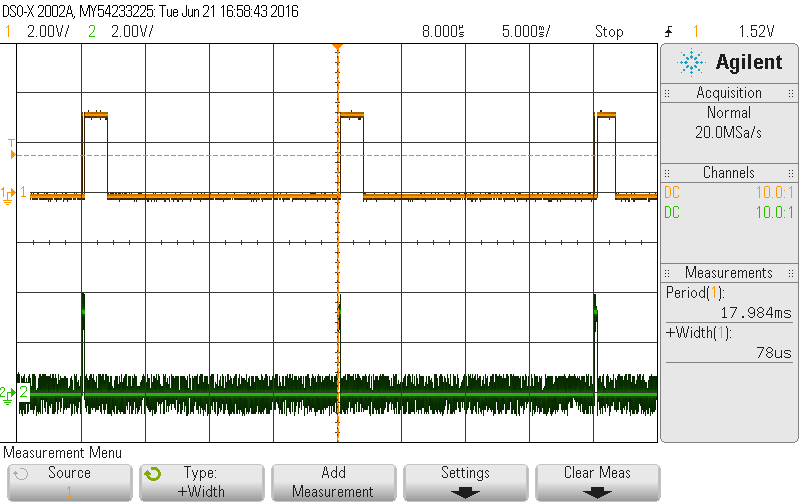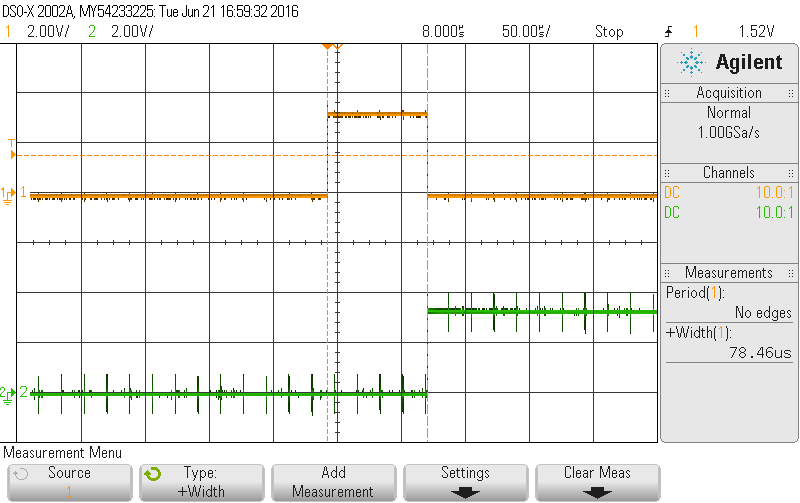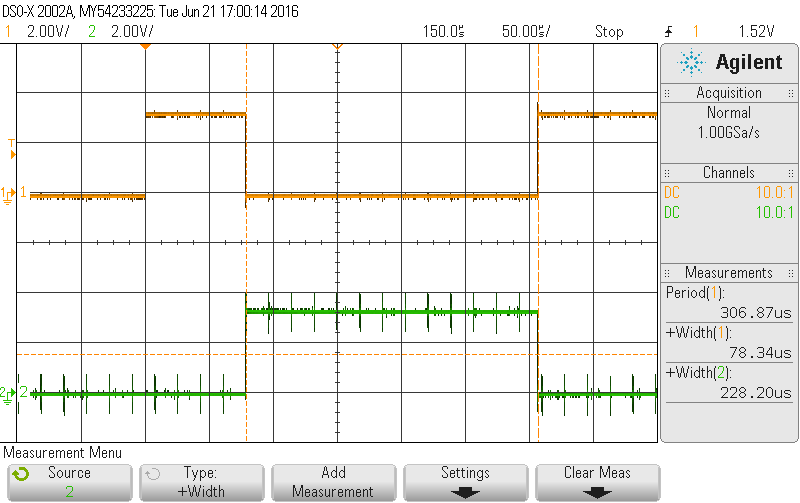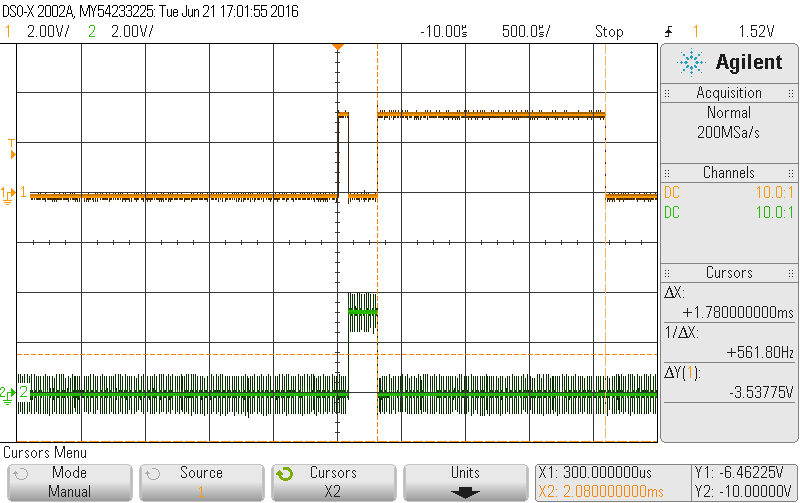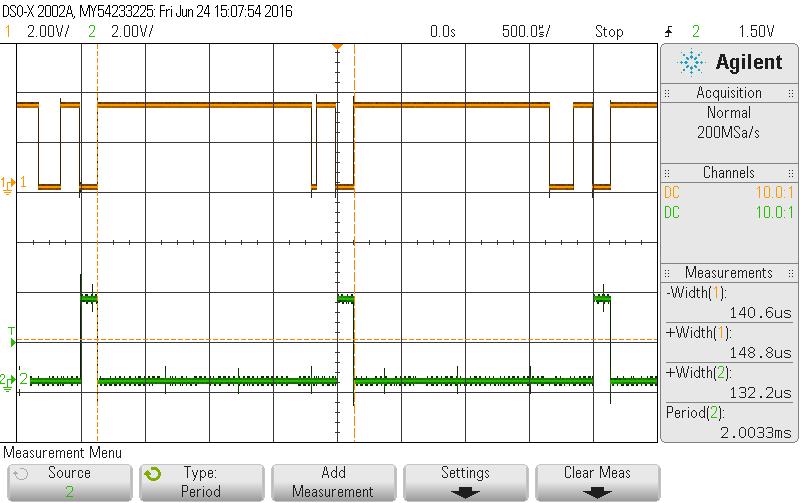I can save the time span data to file in TDC7200EVM GUI all right.
But, there is one porblem.
I want to save the time span data (around 17uS) every 20uS.
I checked the log file and found only 5 data per second = every 200mS.
I found the setting but the minimum setting is 100mS.
Would you please show me how to save the time span data every 20uS = 50ksps?
Trigger update freq = 100mS minmum = 10sps max
Save graph data to file.



